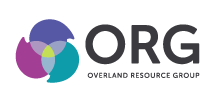This is the sixth installment of a blog series, “Collaboration and Employee Engagement; Ideas Whose Time Has Come, Again.” Earlier, we explored the beginnings of labor-management cooperation in the 1960s, the formation of the National Quality of Work Center (NQWC) that conceptualized collaboration between labor unions and management for shared benefit, and the early experiments that moved cooperation to become the new normal. Here in the last installment, we consider the significant evolution in leadership, management, and organizational thinking since the 60’s, the relevance for employee engagement and Labor management cooperation, and where labor and management cooperation fit in that context.
When Douglas MacGregor conceptualized what he called Theory X and Theory Y ‘management styles’ in 1960 (see Part 1 of this blog series), it was apparent that these were essentially different and contrasting sets of values and beliefs that people held regarding ‘workers’ and what motivates them.
How a given manager led his/her people was determined by these deeply engrained values and beliefs. To build an organization based on the Theory Y approach that workers are creative, interested in their work, and can be highly motivated by being engaged in thinking about and designing that work, one would have to go out and find managers who are already Theory Y “types.”
Since the 1960’s, there has been tremendous evolution in the thinking about organizations, how they are structured and managed, and how people are led. Motivational research in the workplace began to reveal what is now often termed the “compliance versus commitment” contrast – the increasingly accepted belief that people work best and most productively when they “want to” work, rather than when they “have to” work.
The “want to” versus “have to” dynamic underlies what has recently come to be called “discretionary energy.” That is simply the time, effort and thought people bring to a job beyond what is required – how much they will do if they are simply working for a paycheck (compliance) versus how much more they will choose to do when they are asked and expected to solve problems and make decisions about their work (commitment).
People bring a completely different set of creative energy to their jobs when asked to participate in how the work is designed, the resources needed, the information given, the processes and tools necessary – and when they are clearly influential, listened to, and can see their solutions implemented.
Leadership and leadership development are now universally considered essential elements relating to the effectiveness and productivity of organizations. These dimensions are much more prominently in focus today than they were 40 or 50 years ago.
In the 25-plus years of the Overland Resource Group practice, we are continually finding that employees will readily contribute their discretionary energy (i.e. act from the commitment side of motivation) when working in organizations that are designed to encourage that level of involvement. These organizations train leaders to lead first from commitment. Leaders learn to build opportunities into the work week for workers to participate in improvement efforts as part of their paid work. These leaders maximize motivation of all types and minimize complex policies that say “‘we don’t really trust you.”
In particular, in settings where the workforce is represented by organized labor, by a union or unions, both executives and salaried managers, on the one hand, and shop stewards and elected union officials on the other, can become leaders who consistently tap into the discretionary energy of their people. That level of enlightened labor relations requires both parties to begin operating from the belief that, when properly trained and structured, they can become enormously valuable to each other.
Structure and processes are vital, and we offer some critical questions for consideration:
- Is the first-line supervisor considered primarily a team leader?
- Are the elements of ‘high performing work teams’, as recently defined, present? Are time and facilities provided for the team to sit and think together, with the supervisor as an effective discussion leader?
- Are teams trained in basic approaches like Lean Manufacturing, and Six Sigma? (See Part 5 in this blog series)
- Is the organization geared to listen and respond to the output of these teams? Are union officials and managers encouraged to take a problem-solving approach to issues which arise daily – finding solutions which meet the interests of both employees (union members) and management?
- Is the “carrot” valued over the “stick” – with punishment, negative consequences in response to events, considered a last alternative rather than a first?
- Is there a contract in place which spells out steps and processes for the resolution of issues, rather than an exhaustive set of pre-conceived work rules and solutions to every imaginable problem?
These are examples of just some of the organizational dimensions which can effectively be designed and implemented by union and management leaders working together.
In our practice as a third party, bringing union and management together, it is precisely this kind of organization which is the joint goal.
We would be most interested in hearing about how some or all of these concepts are applied, or could be applied, in your organization. Post a comment here, tell us of experiences you have had, or ask a question which this series has raised – we would love to get a discussion going.
Robert Hughes is the founder and President of Overland Resource Group and can be reached at r.hughes@orginc.com.
Nicholas Bizony is long time member of the consulting consortium at Overland and is a founding Principal with The Lakeland Group, where he consults to major organizations in the public and private sectors, enabling them to achieve significant improvements in productivity and quality, cost reduction, and increased customer satisfaction. Nick can be reached at n.bizony@orginc.com.



